RF Dash
Computed tomography of the equine temporohyoid joint: Association between imaging changes and potential risk factors
Dash, RF; Perkins, JD; Chang, YM; Morgan, RE
Authors
JD Perkins
YM Chang
RE Morgan
Abstract
Background: Temporohyoid osteoarthropathy (THO) is characterised by bone proliferation and cartilage ossification caused by infectious and degenerative conditions, amongst others. Objectives: To describe the variable appearance of the temporohyoid joint (THJ) on computed tomography (CT) and investigate associations between CT changes and potential risk factors. Study Design: Cross-sectional study. Methods: Head CT examinations were assessed. A grading system was developed for osseous proliferation (grade 0 [normal] to 3 [severe]) and tympanohyoid cartilage change (grade 0 [normal] to 3 [complete ossification]). Grades were also summed to create an overall sum grade. Ordinal logistic regression was performed to produce a multivariable model that assessed the association between THJ grade and signalment, presenting signs, CT features, and final diagnosis. Results: The horses included (n = 424) most commonly presented for dental and sinus disorders (37.7%). The most frequently observed (mode) bone grade, cartilage grade and overall grade were 2 (41.9%), 0 (52.6%) and 2 (27.0%), respectively. Bone proliferation was most common medially and caudally. Soft tissue swelling (OR 1.9, 95% CI 1.2-3.1, p < 0.05) and temporal bone fragmentation (OR 26.6, 95% CI 5.1-141.4, p < 0.05) were associated with increased bone grade. There was no correlation between increased grade and any presenting sign. Increased sum grade was significantly associated with increased age (OR per year 1.1, 95% CI 1.0-1.1, p < 0.05), Arabians (OR 4.2, 95% CI 1.3-14.0, p < 0.05) and Thoroughbreds (OR 2.9, 95% CI 1.5-5.4, p < 0.05) relative to Warmbloods. Main Limitations: Following training, a single observer evaluated images. Conclusions: Moderate caudomedial osseous proliferation of the THJ is common in horses presented for unrelated disease. Cartilage mineralisation, soft tissue swelling, and temporal bone fragmentation may serve as markers of disease. Thoroughbreds and Arabians are at increased risk of greater THJ remodelling. Increased THJ change was associated with age but not otitis, suggesting THO is predominantly degenerative.
Citation
Dash, R., Perkins, J., Chang, Y., & Morgan, R. (2025). Computed tomography of the equine temporohyoid joint: Association between imaging changes and potential risk factors. Equine Veterinary Journal, https://doi.org/10.1111/evj.14495
| Journal Article Type | Article |
|---|---|
| Acceptance Date | Feb 13, 2025 |
| Online Publication Date | May 5, 2025 |
| Publication Date | 2025 |
| Deposit Date | Jun 23, 2025 |
| Publicly Available Date | Jun 23, 2025 |
| Print ISSN | 0425-1644 |
| Electronic ISSN | 2042-3306 |
| Publisher | Wiley |
| Peer Reviewed | Peer Reviewed |
| DOI | https://doi.org/10.1111/evj.14495 |
| Keywords | CT; diagnostics; horse; imaging; THO; VACUUM PHENOMENON; OSTEOARTHROPATHY |
Files
Computed Tomography Of The Equine Temporohyoid Joint: Association Between Imaging Changes And Potential Risk Factors
(2.7 Mb)
PDF
Licence
http://creativecommons.org/licenses/by/4.0/
Publisher Licence URL
http://creativecommons.org/licenses/by/4.0/
Version
VoR
You might also like
The cholinergic anti-inflammatory pathway inhibits inflammation without lymphocyte relay
(2023)
Journal Article
Organotopic organization of the porcine mid-cervical vagus nerve
(2023)
Journal Article
Downloadable Citations
About RVC Repository
Administrator e-mail: publicationsrepos@rvc.ac.uk
This application uses the following open-source libraries:
SheetJS Community Edition
Apache License Version 2.0 (http://www.apache.org/licenses/)
PDF.js
Apache License Version 2.0 (http://www.apache.org/licenses/)
Font Awesome
SIL OFL 1.1 (http://scripts.sil.org/OFL)
MIT License (http://opensource.org/licenses/mit-license.html)
CC BY 3.0 ( http://creativecommons.org/licenses/by/3.0/)
Powered by Worktribe © 2025
Advanced Search
